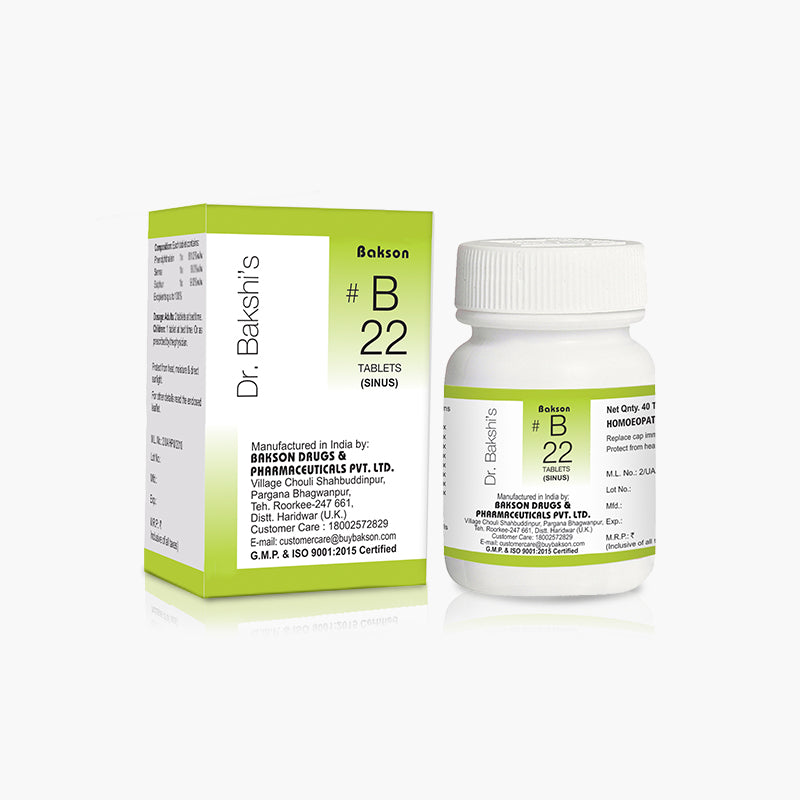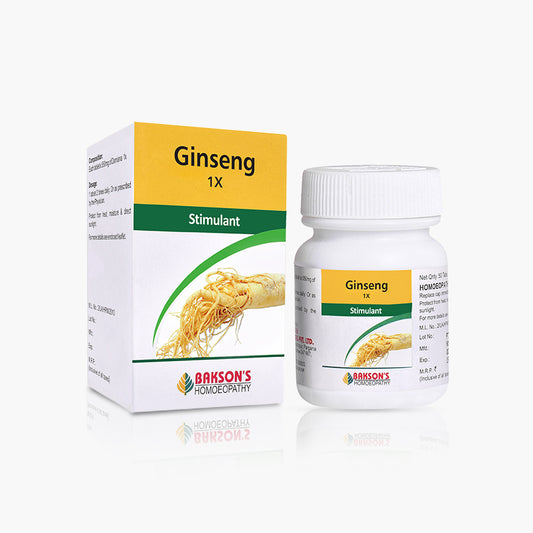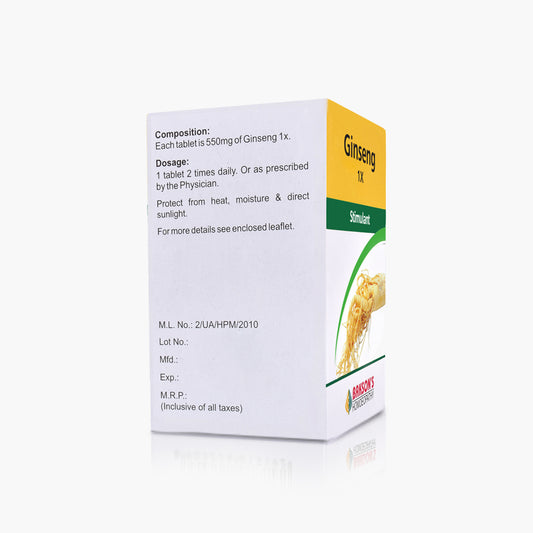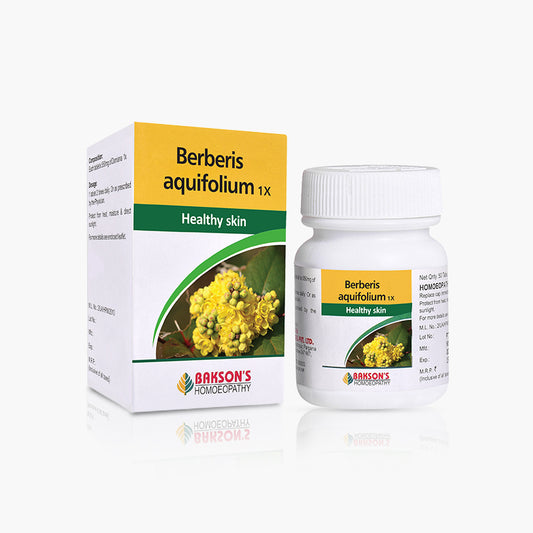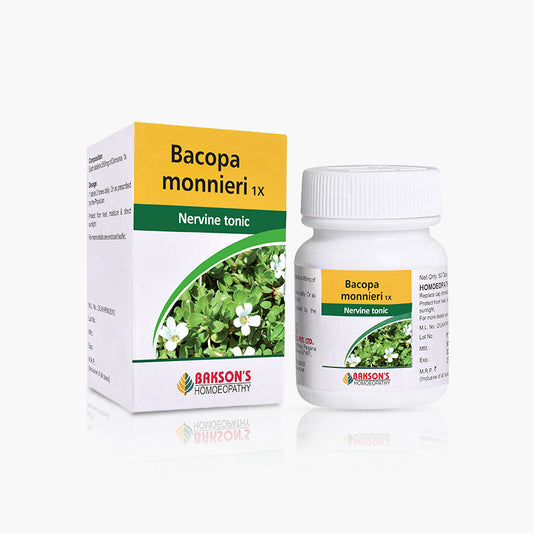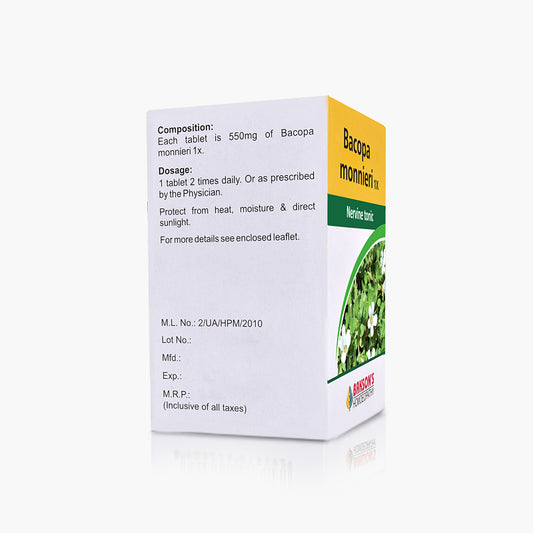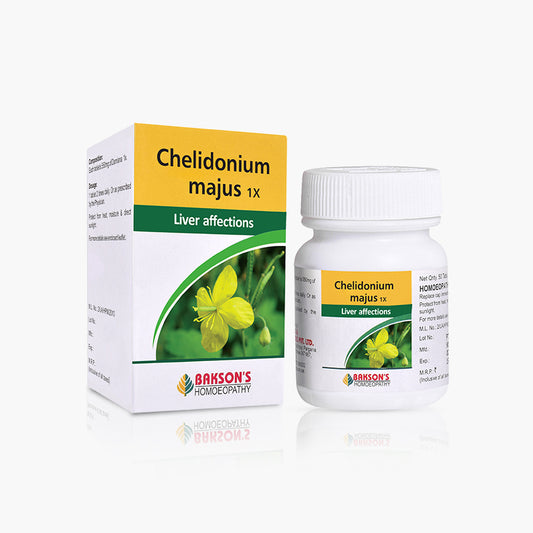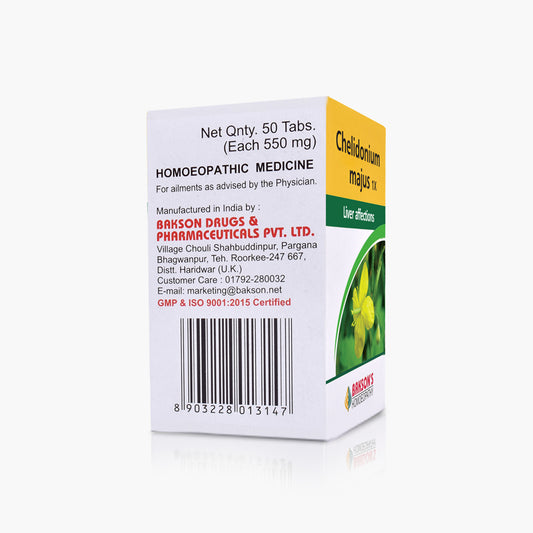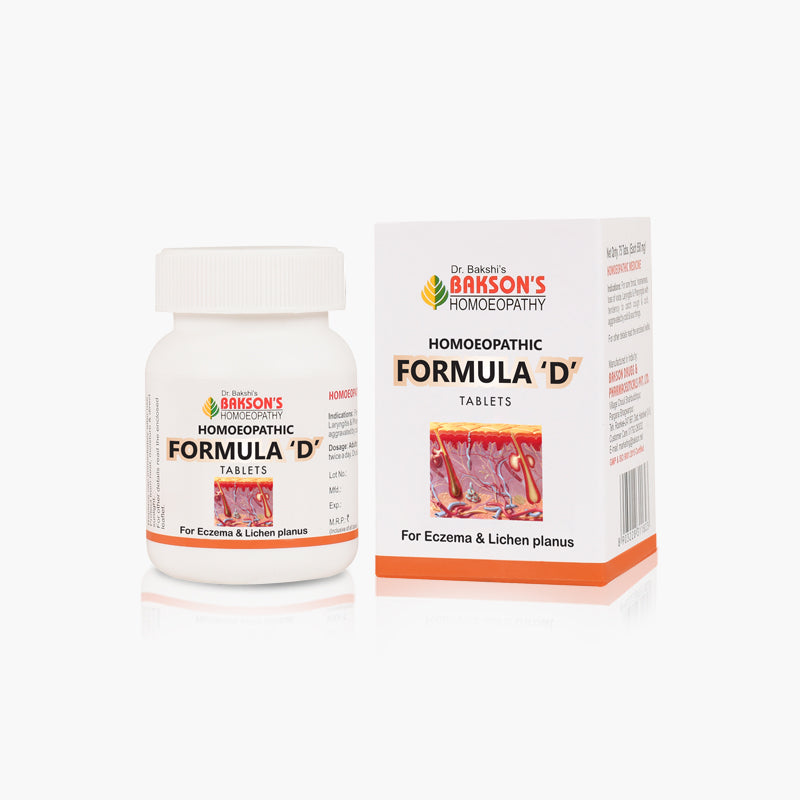
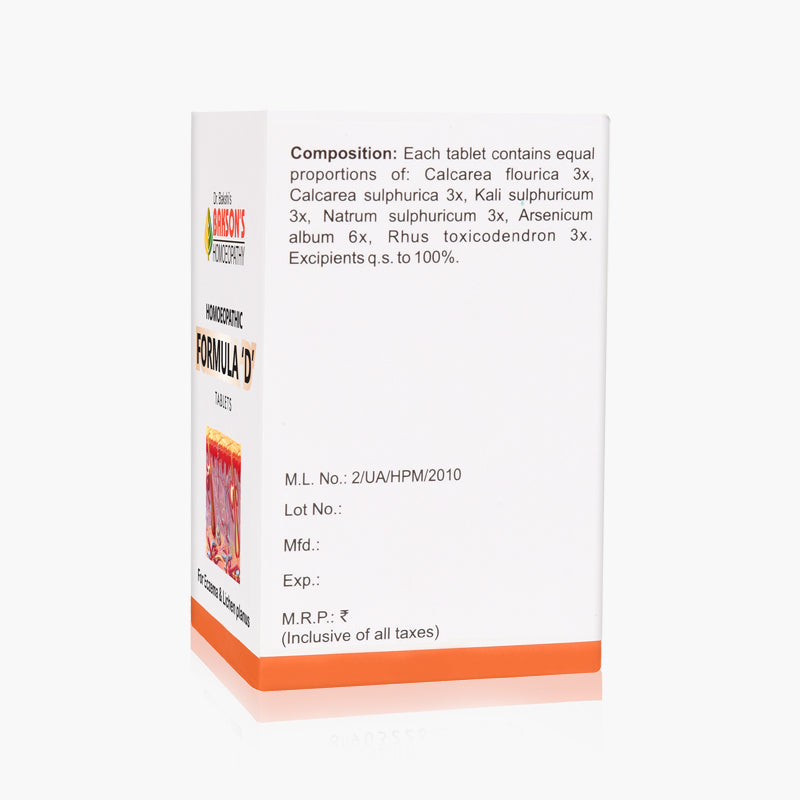
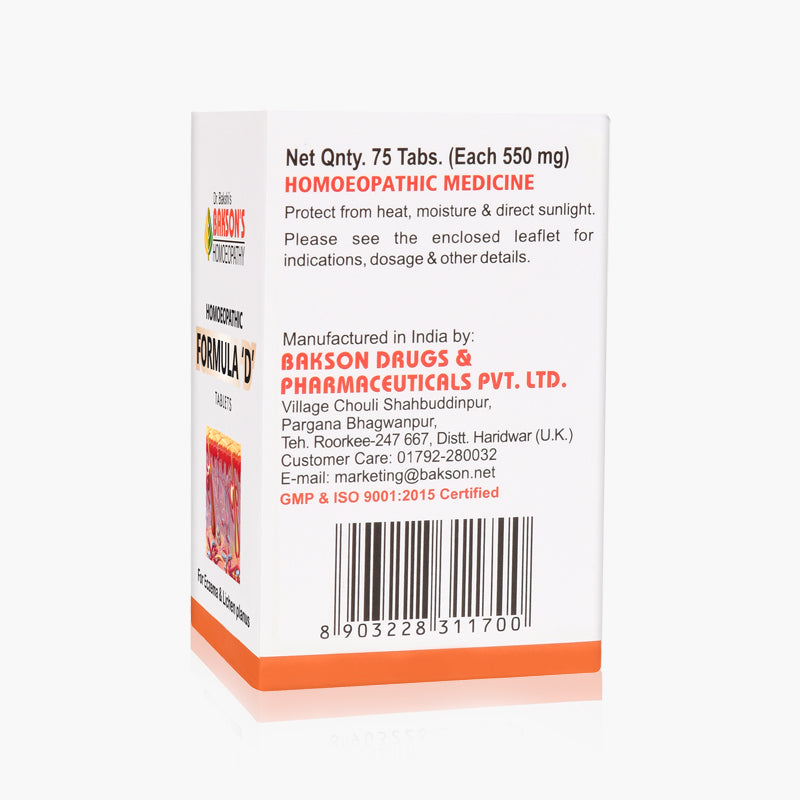
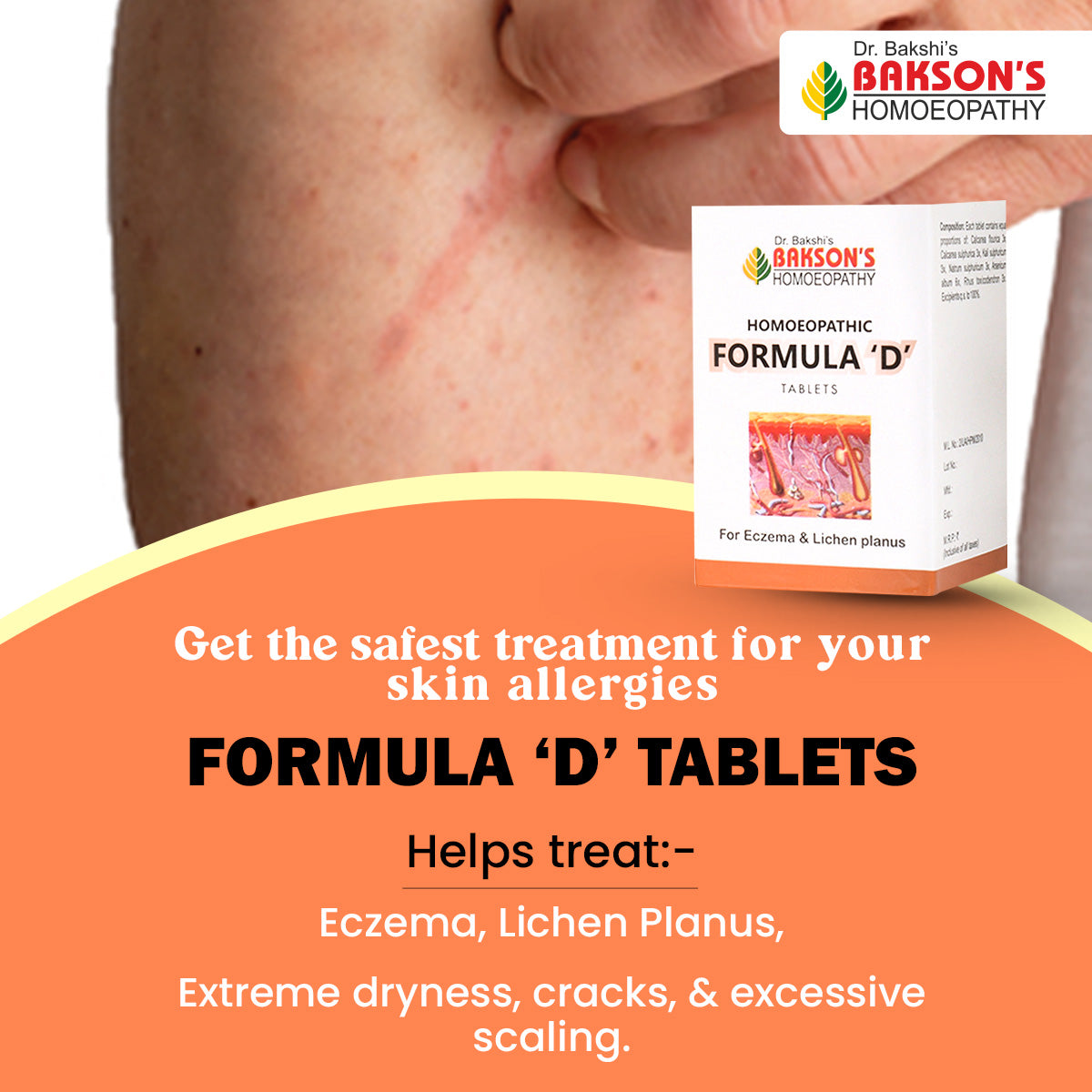
Formula D homoeopathic medicine is used for the treatment of Dermatitis which refers to the inflammation of skin and comprises a range of ailments. In general, dermatitis dry, swollen and red skin, the causes and features of which vary, according to the type of dermatitis.
The common symptoms to all types of dermatitis are - rashes, dry cracked skin, itching, blisters, stinging or burning pain, redness and swelling.
Types of Dermatitis:
There are many types of dermatitis known, the most common ones are:
Atopic Dermatitis or Eczema: It is a hypersensitivity reaction to various allergens, which is a chronic condition and occurs most commonly in children. Personal or family history of eczema, allergies, hay fever or asthma is a major risk factor. It presents with red and itchy skin, red to brownish-gray patches, small raised bumps that may leak fluid and crust over on scratching, skin is cracked, thickened, raw and swollen from scratching. It can be accompanied with asthma or hay fever.
Allergic Contact Dermatitis: Formula Homoeopathic Medicine is used for the treatment of Contact Dermatitis which symptoms include red, itchy, scaly rashes with visible borders due to contact or exposure to chemicals or elements like nickel, fragrances, hair dyes, preservatives, rubber and latex products.
Irritant Contact Dermatitis: Presents with a rash affecting only a small area with no boundaries. It appears immediately on exposure to irritants like harsh soaps, cleansers and solvents.
Dyshidrotic Dermatitis: Formula Homoeopathic Medicine is used for the treatment of Dyshidrotic Dermatitis which presents itself with a sudden occurrence of a rash with small, itchy blisters on palms, soles and along the sides of fingers and toes. Small itchy blisters are the most characteristic sign of this type of dermatitis. Skin is red, cracked, and sweaty. Cause is unknown, but risk factors include a positive family history of eczema, allergies, stress, contact with metals, sweaty hands or feet, etc.
Seborrhoeic Dermatitis: Also known as cradle cap in babies, this affects most commonly the scalp, but can also affect face and chest. 3 months and younger babies often develop cradle cap with crusty yellow or brown scales on their scalp, which resolves before the age of 1 year. In adults, lesion can be seen on face, middle part of chest, around umbilicus, on buttocks, in skin folds, below breasts, etc. it presents with itchy or burning skin with scales which are yellow or white and oily, that flake off easily.
Neurodermatitis, lichen simplex chronicus: It starts with an itchy patch of skin which is worse on scratching which creates an itch-scratch cycle resulting in a thick and leathery skin. It is commonly seen on neck, wrists, forearms, legs or anal region.
Nummular Dermatitis, discoid eczema: It is a chronic condition presenting with coin-shaped spots on the skin which are itchy and well-defined and may ooze clear fluid or become dry and crusty. It often develops after a skin injury like burn, abrasion or insect bite and lasts for several months.
Stasis Dermatitis: It presents with skin changes occurring due to poor blood circulation or venous stasis. It is more common in people aged 50 years or more and women are more at risk. Symptoms include red, yellow or brown skin and swelling around the ankles, varicose veins, itching, pain, thickening of skin around ankles or shin, etc.
Dermatitis neglecta: It occurs from a lack of hygiene presenting with scales on the skin which are stubborn and stuck to the skin, and hyperpigmentation. People with chronic disability, old age, sensitive skin, recent trauma or certain mental health conditions are more at risk.
The action of each ingredient of is as follows :
Calcarea fluorica: Useful for Fissures or Cracks in palms & hard skin.
Calcarea sulph.: Skin affections, pimples and dry Eczema that do not heal readily.
Kali sulphuricum: Burning, itching, papular eruptions with abundant scaling.
Natrum sulphuricum: Generalised itching, which aggravates on undressing.
Arsenicum album: Dryness of skin, Dandruff, Eczema with formation of pustules.
Rhus tox.: Intense itching, Urticaria, burning, Eczema, eruptions containing fluid.
WARNING: There may be aggravation in some very sensitive patients. The most common one is when patient shifts from one mode of treatment like from allopathy to homoeopathy. Wherein patient abruptly stops taking strong allopathic medicines like steroids, anti-histamines, antibiotics etc. This action results in withdrawal of symptoms of the original disease which were suppressed with allopathy. Hence, never stop allopathy suddenly but gradually taper it while taking homoeopathy. This aggravation is commonly mistaken as homoeopathic aggravation.
- If symptoms persist, worsen or recur frequently, consult a registered medical practitioner
- Keep this and all medicines out of the reach of children.
- Store in a cool, dark & dry place.
REDUCTION IN THE INTENSITY OF ALLERGIC MANIFESTATIONS
The graph depicts how Bakson’s Homoeopathy helps in lowering the intensity of symptoms (smaller subsequent peaks), in decreasing the duration of the episodes (area under the peaks) and in increasing the time gap between subsequent episodes. Eventually the patient acquires enough resistance to remain symptom free, despite repeated exposure to the same allergens.
For better results :
- Take nutritious diet.
- Avoid application of cosmetic creams and lotions.
- Avoid fatty food like chocolates, nuts, dry fruits, spicy food etc. which might increase the activity of sebaceous glands.
- Exercise regularly.
Manufactured in India by: Bakson Drugs and Pharmaceuticals Pvt. Ltd. Chouli Shahbuddinpur, Pargana Bhagwanpur, The. Roorkee-247661, Distt Haridwar, UK, India ,Customer care executive Mail id and contact details-customercare@buybakson.com, 18002572829
